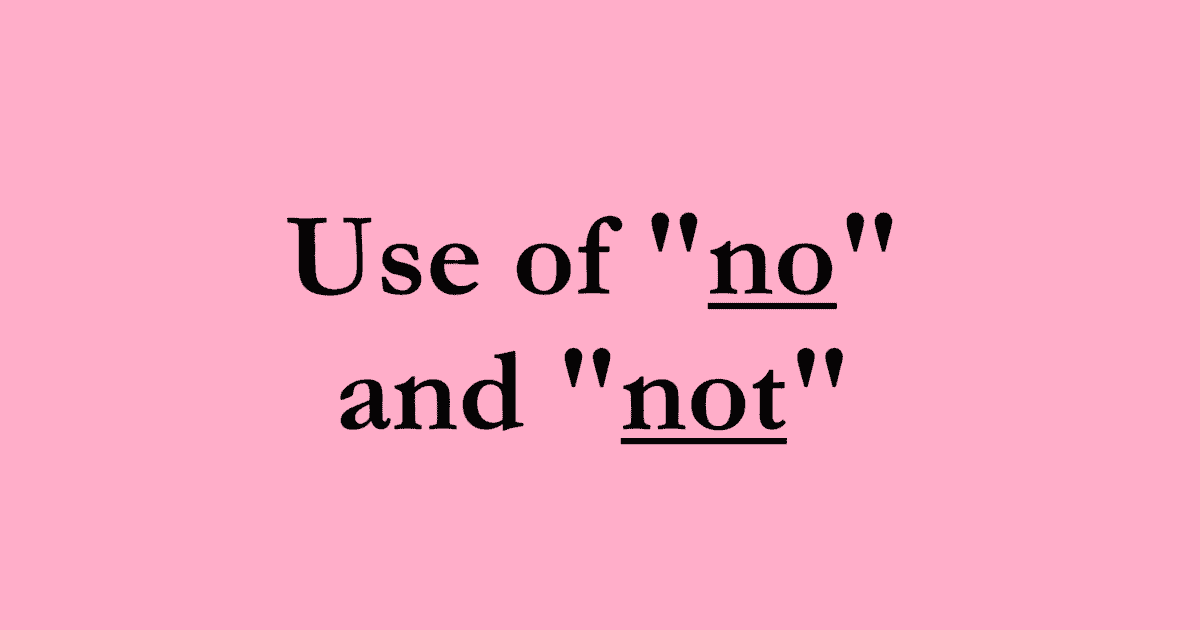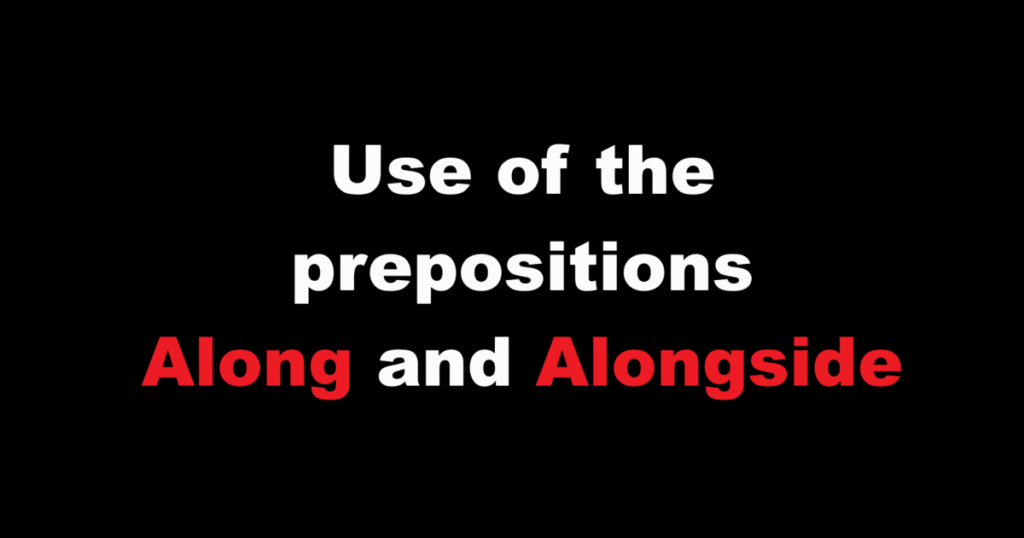Understanding the difference between no and not is one of those small but important parts of English grammar that dramatically improve clarity and style. Both words are negative, but they play different grammatical roles and appear in different structures. This post explains how and when to use each word, with examples, common pitfalls, and tips for clear writing.
Overview: What they are and how they differ
- No is primarily a determiner (also an exclamation or adverb in some contexts). It directly modifies nouns and expresses the absence of something.
- Example (determiner): “There is no sugar left.”
- Example (exclamation): “No! I disagree.”
- Not is an adverb that negates verbs, adjectives, adverbs, and clauses. It is used to make a verb phrase negative or to negate a modifier.
- Example (verb negation): “She does not like coffee.”
- Example (adjective negation): “This is not useful.”
The simplest way to remember: use no when you’re denying the existence or presence of a noun; use not when you’re negating actions, states, or qualities.
Detailed uses and grammar
1. “No” as a determiner (before nouns)
“No” is used before a noun or noun phrase to mean “not any” or “there is none.”
- “There is no milk in the fridge.” = There is not any milk in the fridge.
- “He had no idea what to say.” = He had not any idea.
Note: With singular countable nouns, “no” works directly without an article.
- Correct: “There is no answer.”
- Incorrect: “There is not answer.” (Here, “not” can’t replace “no”.)
2. “No” as an adjective modifying determiners or pronouns
“No” can combine with other determiners or stand alone:
- “No one” / “no one knows” = not anyone.
- “No one was there.”
- “No chance” = not any chance.
3. “No” as an exclamation or interjection
Used to give a short negative response or to express refusal.
- “No! Don’t touch that.”
- “No, thanks.” (declining an offer)
4. “Not” as a clausal negator (negating verbs or whole clauses)
“Not” negates verbs and verb phrases and is placed after auxiliary verbs (do, have, be, will, can, etc.) or with auxiliary-like constructions.
- With auxiliaries: “She is not ready.” / “They have not arrived.”
- With simple present or past without an auxiliary, use “do/does/did”: “I do not know.” / “He did not come.”
- With modal verbs: “You should not worry.” / “They cannot attend.” (note: cannot is a single word)
5. “Not” negating adjectives, adverbs, and phrases
“Not” is used to change the meaning of an adjective, adverb, or prepositional phrase.
- “This is not possible.”
- “She is not very tall.”
- “He is not from London.”
6. Combining “no” and “not” in comparisons and emphasis
Both words can appear in the same construction when needed:
- “There is no reason not to try.”
Here, “no reason” (no + noun) and “not to try” (negated infinitive) work together.
Common structures and examples
- No + noun (not any)
- “No students were late.”
- “There is no water.”
- Not + auxiliary + main verb
- “They are not leaving.”
- “I do not understand.”
- Not + adjective/adverb
- “The result was not surprising.”
- “She is not particularly friendly.”
- No + one / no + body / no + thing
- “No one called.”
- “No one knew the answer.”
- No + possessive + noun (less common but possible)
- “He had no money of his own.” (more natural than “He had not money of his own.”)
Special cases and points of confusion
A. “No” vs “not any”
Often “no” and “not any” are interchangeable in meaning, but their grammar and tone differ.
- “There is no bread.” (shorter, more direct)
- “There is not any bread.” (emphatic or stylistically different)
“No” is more succinct and idiomatic in many contexts.
B. “Not” can’t directly modify nouns
Incorrect: “She has not friends.”
Correct: “She has no friends.” or “She does not have friends.” (or better, “She does not have any friends.”)
C. Double negatives
Be careful: Standard English typically avoids double negatives (two negatives that make the meaning positive or unclear).
- Non-standard or dialect: “I don’t have no money.” (interpreted as a stronger negative in some dialects)
- Standard: “I don’t have any money.” or “I have no money.”
Use “no” alone or pair “not” with “any” for standard negation.
D. Using “not” with auxiliary verbs and contractions
Contractions are common: “isn’t,” “don’t,” “can’t,” “won’t.” Keep register in mind—contractions are fine in informal writing, less appropriate in formal contexts.
- Informal: “She isn’t coming.”
- Formal: “She is not coming.”
E. Negative response vs. negation in clause
- Short negative answer: “No.” — used alone as a reply.
- Clause negation: “No, I do not agree.” or “I do not agree.”
F. Negative determiners beyond “no”
English has other negative determiners and pronouns: “none,” “nobody,” “nothing,” “neither.” These sometimes overlap with “no.”
- “No students” vs “no one” vs “nobody”
- “No students passed the test.”
- “No one knew the answer.”
- “Nobody came.”
Punctuation and tone
- When “no” is used as an interjection or short response, it is often followed by an exclamation point or comma depending on forcefulness: “No!” or “No, thank you.”
- “Not” rarely stands alone; punctuation depends on the clause: “I did not—contrary to belief—mean to offend you.” (em dashes for emphasis)
- Avoid overusing negatives; multiple negatives in a sentence can make the meaning cumbersome.
Style tips and best practices
- Prefer clarity: Choose the form (no / not) that makes the sentence straightforward.
- Instead of “I do not have no time,” use “I have no time” or “I do not have any time.”
- Avoid stacked negatives unless used intentionally for rhetorical effect or dialect representation.
- When negating a noun quantity, “no” is often more concise and natural.
- “No solution” rather than “not any solution.”
- Use “not” to negate verbs and adjectives, and remember to use auxiliary verbs when needed (do/does/did).
- Watch register: use contractions for informal writing, avoid them in formal essays or professional documents.
Examples: Correct vs Incorrect
- Incorrect: “She not happy.”
Correct: “She is not happy.” - Incorrect: “There not any milk.”
Correct: “There is no milk.” or “There is not any milk.” - Incorrect: “I didn’t see nobody.” (if writing standard English)
Correct: “I didn’t see anybody.” or “I saw nobody.” - Incorrect: “No he can’t.” (as a reply)
Correct: “No, he can’t.” (comma after short response)
Quick reference summary
- Use no:
- Before a noun to mean “not any”: “No food,” “No time,” “No reason.”
- As an exclamation: “No!” or “No, thanks.”
- In fixed expressions: “no one,” “no one of us,” “no doubt.”
- Use not:
- To negate verbs, verb phrases, clauses: “is not,” “does not,” “will not.”
- To negate adjectives/adverbs and prepositional phrases: “not possible,” “not very.”
- With modal/auxiliary verbs: “cannot,” “should not,” “must not.”
Final remarks
Both “no” and “not” are essential for expressing negation in English, but they belong to different parts of speech and are used in different grammatical spots. Learning the specific roles each plays will help you write more clearly and avoid common errors such as missing auxiliaries, incorrect noun negation, and double negatives. When in doubt, ask whether you are negating a noun (use “no”) or negating a verb/adjective/clause (use “not”), and restructure the sentence if necessary.


